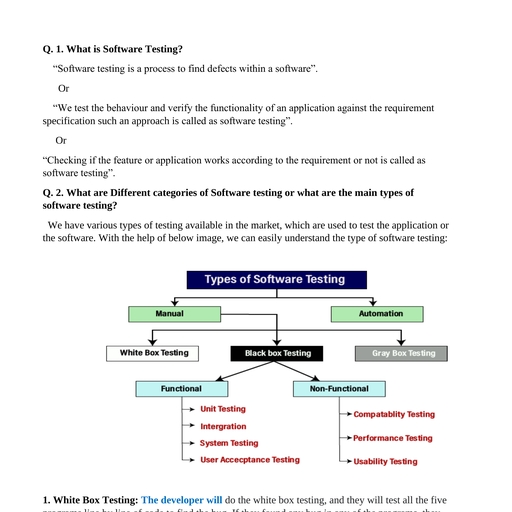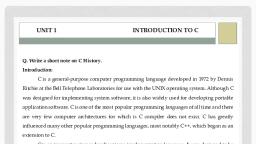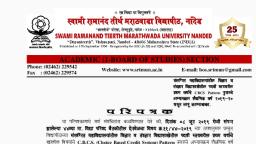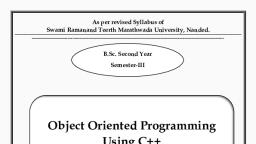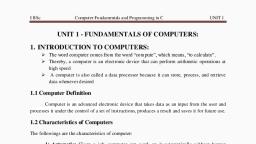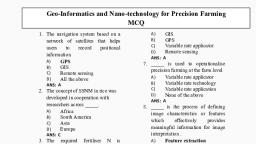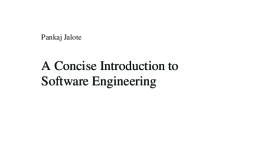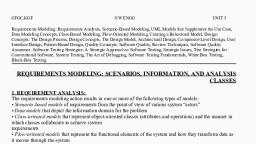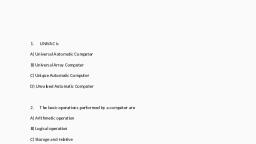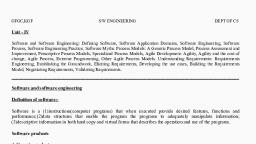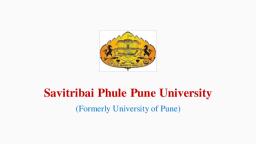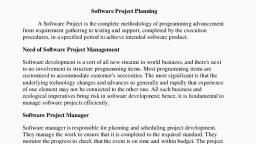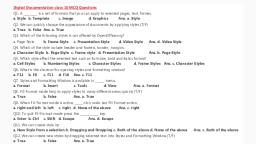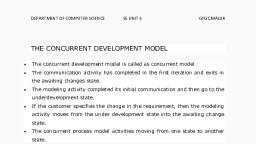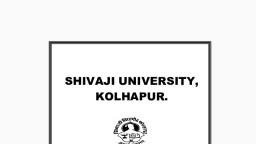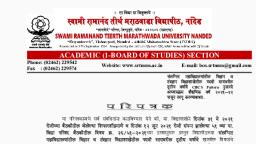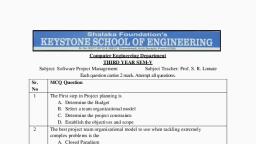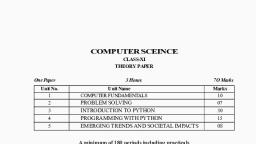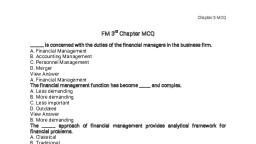Page 1 :
Semester VI 602 - Core 25, B.Sc.T.Y. : SOFTWARE ENGINEERING, MULTIPLE CHOICE QUESTIONS, 1) Software is, (a) Superset of programs, Ans. a, , (b) subset of programs, , (c) Set of programs, , (d) none of the above, , 2) Which is NOT the part of operating procedure manuals?, (a) User manuals, (b) Operational manuals, (c) Documentation manuals, (d) Installation manuals, Ans. c, 3) Which is NOT a software characteristic?, (a) Software does not wear out, (c) Software is not manufactured, Ans. d, , (b) Software is flexible, (d) Software is always correct, , 4) Product is, (a) Deliverables, (c) Organization's effort in development, Ans. a, , (b) User expectations, (d) none of the above, , 5) To produce a good quality product, process should be, (a) Complex (b) Efficient, (c) Rigorous, Ans. b, 6) Which is not a product metric?, (a) Size (b) Reliability, Ans. c, , (c) Productivity, , 7) Which is NOT a process metric?, (a) Productivity (b) Functionality, Ans. b, , (c) Quality, , (d) none of the above, , (d) Functionality, , (d) Efficiency, , 8) Effort is measured in terms of:, (a) Person-months, (b) Rupees, Ans. a, , (c) Persons, , 9) UML stands for, (a) Uniform modeling language, (c) Unit modeling language, Ans. b, , (b) Unified modeling language, (d) Universal modeling language, , (d) Months, , 10) An independently deliverable piece of functionality providing access to its services through interface is, called, (a) Software measurement, (b) Software composition, (c) Software measure, (d) Software component, Ans. d
Page 2 :
Semester VI 602 - Core 25, 11) Infrastructure software are covered under, a) Generic products, (c) Generic and Customized products, Ans. a, , (b) Customized products, (d) none of the above, , 12) Management of software development is dependent on, (a) People, (b) product, (c) Process, Ans. d, , (d) all of the above, , 13) During software development, which factor is most crucial?, (a) People, (b) Product, (c) Process, Ans. a, , (d) Project, , 14) Program is, (a) Subset of software, Ans. a, , (b) super set of software, , 15) Milestones are used to, (a) Know the cost of the project, (c) Know user expectations, Ans. b, , (c) Software, , (d) none of the above, , (b) know the status of the project, (d) none of the above, , 16) The term module used during design phase refers to, (a) Function, (b) Procedure, (c) Sub program, Ans. d, , (d) All of the above, , 17) Software consists of, (a) Set of instructions + operating system, (b) Programs + documentation + operating procedures, (c) Programs + hardware manuals, (d) Set of programs, Ans. b, 18) Software engineering approach is used to achieve:, (a) Better performance of hardware, (b) Error free software, (c) Reusable software, (d) Quality software product, Ans. d, 19) Concept of software engineering is applicable to, (a)FORTRAN language only, (b) Pascal language only, (c) ‘C’ language only, (d) All of the above, Ans. d, 20) CASE Tool is, (a) Computer Aided Software Engineering, (c) Constructive Aided Software Engineering, Ans. A, , (b) Component Aided Software Engineering, (d)Computer Analysis Software Engineering
Page 3 :
Semester VI 602 - Core 25, 21) Spiral Model was developed by, (a) Bev Little wood, (c) Roger Pressman, Ans. b, , (b) Berry Boehm, (d) Victor Basili, , 22) Which model is most popular for student’s small projects?, (a) Waterfall model, (b) Spiral model, (c) Quick and fix model, (d) Prototyping model, Ans. c, 23) Which is not a software life cycle model?, (a) Waterfall model, (b) Spiral model, (c) Prototyping model, (d) Capability maturity model, Ans. d, 24) Project risk factor is considered in, (a) Waterfall model, (c) Spiral model, Ans. c, , (b) Prototyping model, (d) Iterative enhancement model, , 25) SDLC stands for, (a) Software design life cycle, (c) System development life cycle, Ans. b, , (b) Software development life cycle, (d) System design life cycle, , 26) Build and fix model has, (a) 3 phases, (b) 1 phase, Ans. c, , (c) 2 phases, , (d) 4 phases, , 27) Which of the following is a type of software?, (a) System Software, (b) Embedded Software, (c) Application, (d) all of the above, Ans. a, 28) Waterfall model is not suitable for, (a) small projects, (c) complex projects, Ans. b, , (b) accommodating change, (d) none of the above, , 29) RAD stands for, (a) Rapid application development, (c) Ready application development, Ans. a, , (b) Relative application development, (d) Repeated application development, , 30) RAD model was proposed by, (a) Lucent Technologies, Ans. c, , (b) Motorola, , (c) IBM, , (d) Microsoft
Page 4 :
Semester VI 602 - Core 25, 31) If requirements are easily understandable and defined, which model is best suited?, (a) Waterfall model, (b) Prototyping model, (c) Spiral model, (d) None of the above, Ans. a, 32) If requirements are frequently changing, which model is to be selected?, (a) Waterfall model, (b) Prototyping model, (c) RAD model, (d) Iterative enhancement model, Ans. b, 33) If user participation is available, which model is to be chosen?, (a) Waterfall model, (b) Iterative enhancement model, (c) Spiral model, (d) RAD model, Ans. d, 34) If limited user participation is available, which model is to be selected?, (a) Waterfall model, (b) Spiral model, (c) Iterative enhancement model, (d) any of the above, Ans. d, 35) If project is the enhancement of existing system, which model is best suited?, (a) Waterfall model, (b) Prototyping model, (c) Iterative enhancement model, (d) Spiral model, Ans. c, 36) Which one is the most important feature of spiral model?, (a) Quality management, (b) Risk management, (c) Performance management, (d) Efficiency management, Ans. b, 37) Most suitable model for new technology that is not well understood is:, (a) Waterfall model, (b) RAD model, (c) Iterative enhancement model, (d) Evolutionary development model, Ans. d, 38) Statistically, the maximum percentage of errors belong to the following phase of SDLC, (a) Coding, (b) Design, (c) Specifications, (d) Installation and maintenance, Ans. c, 39) Which phase is not available in software life cycle?, (a) Coding, (b) Testing, (c) Maintenance, Ans. d, , (d) Abstraction, , 40) The development is supposed to proceed linearly through the phase in, (a) Spiral model, (b) Waterfall model (c) Prototyping model, Ans. b, , (d) None of the above
Page 5 :
Semester VI 602 - Core 25, 41) The outcome of construction phased can be treated as:, (a) Product release, (b) Beta release (c) Alpha release, Ans. b, , (d) All of the above, , 42) Which one is not a step of requirement engineering?, (a) Requirements elicitation, (b) Requirements analysis, (c) Requirements design, (d) Requirements documentation, Ans. c, 43) Requirements elicitation means, (a) Gathering of requirements, (c) Understanding of requirements, Ans. d, , (b) Capturing of requirements, (d) All of the above, , 44) SRS stands for, (a) Software requirements specification, (c) Systematic requirements specifications, Ans. a, , (b) System requirements specification, (d) None of the above, , 45) SRS document is for, (a) “What” of a system?, (c) Costing and scheduling of a system, Ans. a, , (b) How to design the system?, (d) System’s requirement., , 46) Requirements review process is carried out to, (a) Spend time in requirements gathering, (c) Document the requirements, Ans. b, , (b) Improve the quality of SRS, (d) None of the above, , 47) Which one of the statements is not correct during requirements engineering?, (a) Requirements are difficult to uncover, (b) Requirements are subject to change, (c) Requirements should be consistent (d) Requirements are always precisely known., Ans. d, 48) Which one is not a type of requirements?, (a) Known requirements, (c) Undreamt requirements, Ans. d, , (b) Unknown requirements, (d) Complex requirements, , 49) Which one is not a requirements elicitation technique?, (a) Interviews, (b) The use case approach, (c) FAST, Ans. d, 50) FAST stands for, (a) Functional Application Specification Technique, (b) Fast Application Specification Technique, (c) Facilitated Application Specification Technique, (d) None of the above, Ans. c, , (d) Data flow diagram.
Page 6 :
Semester VI 602 - Core 25, 51) QFD in requirement engineering stands for, (a) Quality function design, (c) Quality function development, Ans. d, , (b) Quality factor design, (d) Quality function deployment, , 52) Which is not a type of requirements under quality function deployment?, (a) Normal requirements, (b) Abnormal requirements, (c) Expected requirements, (d) Exciting requirements, Ans. b, 53) Use case approach was developed by, (a) I. Jacobson and others, (c) B. Little wood, Ans. a, , (b) J.D. Musa and others, (d) None of the above, , 54) Context diagram explains, (a) The overview of the system, (c) The entities of the system, Ans. a, , (b) The internal view of the system, (d) None of the above, , 55) DFD stands for, (a) Data Flow design, (c) Data flow diagram, Ans. c, , (b) Descriptive functional design, (d) None of the above, , 56) ERD stands for, (a) Entity relationship diagram, (c) Entity relationship design, Ans. a, , (b) Exit related diagram, (d) Exit related design, , 57) Which is not a characteristic of a good SRS?, (a) Correct, (b) Complete, Ans. d, , (c) Consistent, , (d) Brief, , 58) Outcome of requirements specification phase is, (a) Design Document, (b) SRS Document, (c) Test Document, (d) None of the above, Ans. b, 59) The basic concepts of ER model are:, (a) Entity and relationship, (c) Entity, effects and relationship, Ans. d, , (b) Relationships and keys, (d) Entity, relationship and attribute, , 60) The DFD depicts, (a) Flow of data, Ans. a, , (c) Both (a) & (b), , (b) Flow of control, , (d) None of the above
Page 7 :
Semester VI 602 - Core 25, 61) Product features are related to:, (a) Functional requirements, (c) Interface requirement, Ans. a, , (b) Non functional requirements, (d) None of the above, , 62) Which one is a quality attribute?, (a) Reliability, (b) Availability, Ans. d, , (c) Security, , 63) IEEE standard for SRS is:, (a) IEEE Standard 837-1998, (c) IEEE Standard 832-1998, Ans. b, , (b) IEEE Standard 830-1998, (d) IEEE Standard 839-1998, , 64) Which one is not a functional requirement?, (a) Efficiency, (b) Reliability, Ans. c, , (c) Product features, , 65) APIs stand for:, (a) Application performance interfaces, (c) Application programming integration, Ans. b, , (b) Application programming interfaces, (d) Application performance integration, , 66) After the finalization of SRS, we may like to estimate, (a) Size, (b) Cost, (c) Development time, Ans. d, , (d) All of the above, , (d) Stability, , (d) All of the above., , 67 )Which one is not a size measure for software, (a) LOC, (b) Function Count, (c) Cyclomatic Complexity, (d) Halstead’s program length, Ans. c, 68) Function count method was developed by, (a) B.Beizer, (b) B.Boehm, Ans. d, , (c) M.halstead, , (d) Alan Albrecht, , 69) Function point analysis (FPA) method decomposes the system into functional units. The total numbers of, functional units are, (a) 2, (b) 5, (c) 4, (d) 1, Ans. b, 70 )COCOMO was developed initially by, (a) B.W.Bohem(b) Gregg Rothermal (c) B.Beizer, Ans. a, 71) A COCOMO model is, (a) Common Cost estimation model, (c) Complete cost estimation model, Ans. b, , (d) Rajiv Gupta, , (b) Constructive cost Estimation model, (d) Comprehensive Cost estimation model
Page 8 :
Semester VI 602 - Core 25, 72) Estimation of software development effort for organic software is COCOMO is, (a) E=2.4(KLOC)1.05PM, (b) E=3.4(KLOC)1.06PM, (c) E=2.0(KLOC)1.05PM, (d) E-2.4(KLOC)1.07PM, Ans. a, 73) Estimation of size for a project is dependent on, (a) Cost, (b) Schedule, (c) Time, Ans. d, , (d) None of the above, , 74) In function point analysis, number of Complexity adjustment factor is, (a) 10, (b) 20, (c) 14, (d) 12, Ans. c, 75) COCOMO-II estimation model is based on, (a) Complex approach, (c) Bottom up approach, Ans. b, , (b) Algorithm approach, (d) Top down approach, , 76) Cost estimation for a project may include, (a) Software Cost, (b) Hardware Cost, Ans. d, , (c) Personnel Costs, , (d) All of the above, , 77) In COCOMO model, if project size is typically 2-50 KLOC, then which mode is to be selected?, (a) Organic, (b) Semidetached, (c) Embedded, (d) None of the above, Ans. a, 78) COCOMO-II was developed at, (a) University of Maryland, (c) IBM, Ans. b, , (b) University of Southern California, (d) AT & T Bell labs, , 79) Which one is not a Category of COCOMO-II?, (a) End User Programming, (b) Infrastructure Sector, (c) Requirement Sector, (d) System Integration, Ans. c, 80) Which one is not infrastructure software?, (a) Operating system, (c) Compilers, Ans. d, , (b) Database management system, (d) Result management system, , 81) How many stages are in COCOMO-II?, (a) 2, (b) 3, (c) 4, Ans. b, , (d) 5, , 82) Which one is not a stage of COCOMO-II?, (a) Application Composition estimation model, (b) Early design estimation model, (c) Post architecture estimation model, (d) Comprehensive cost estimation model, Ans. d
Page 9 :
Semester VI 602 - Core 25, 83) The most desirable form of coupling is, (a) Control, (b) Data, (c) Common, Ans. b, , (d) Content, , 84) The worst type of coupling is, (a) Content, (b) Common (c) External, Ans. a, , (d) Data coupling, , 85) The most desirable form of cohesion is, (a) Logical cohesion, (c) Functional cohesion, Ans. c, , (b) Procedural cohesion, (d) Temporal cohesion, , 86) The worst type of cohesion is, (a) Temporal cohesion, (c) Logical cohesion, Ans. b, , (b) Coincidental cohesion, (d) Sequential cohesion, , 87) Which one is not a strategy for design?, (a) Bottom up design, (c) Embedded design, Ans. c, , (b) Top down design, (d) Hybrid design, , 88) Software testing is:, (a) The process of demonstrating that errors are not present, (b) The process of establishing confidence that a program does what it is supposed to do, (c) The process of executing a program to show it is working as per specifications, (d) The process of executing a program with the intent of finding errors, Ans. d, 89) Software mistakes during coding are known as:, (a) failures, (b) defects, (c) bugs, Ans. c, , (d) errors, , 90) Functional testing is known as:, (a) Structural testing, (b) Behavior testing, Ans. b, , (c) Regression testing, , (d) None of the above, , (c) Development testing, , (d) Maintenance, , 91) Regression testing is primarily related to:, (a) Functional testing, (b) Data flow testing, testing, Ans. d, , 92 )The relationship of data elements in a module is called, (a) Coupling, (b) Cohesion, (c) Modularity, Ans. b, , (d) None of the above, , 93) The extent to which different modules are dependent upon each other is called, (a) Coupling, (b) Cohesion, (c) Modularity, (d) Stability
Page 10 :
Semester VI 602 - Core 25, Ans. a, 94) A system that does not interact with external environment is called, (a) Closed system, (b) Logical system, (c) Open system, (d) Hierarchal system, Ans. a, 95) Which one is not a phase of “bath tub curve” of hardware reliability, (a) Burn-in, (b) Useful life (c) Wear-out (d) Test-out, Ans. d, 96) Software reliability is, (a) The probability of failure free operation of a program for a specified time in a specified environment, (b) The probability of failure of a program for a specified time in a specified environment, (c) The probability of success of a program for a specified time in any environment, (d) None of the above, Ans. a, 97) Fault is, (a) Defect in the program, above, Ans. d, 98) One fault may lead to, (a) one failure, Ans. d, , (b) Mistake in the program, , (b) two failures, , (c) Error in the program, , (c) many failures, , 99) Which ‘time’ unit is not used in reliability studies?, (a) Execution time, (b) Machine time, Ans. b, , (c) Clock time, , (d) all of the above, , (d) Calendar time, , 100) Failure occurrences can be represented as, (a) time to failure, (b) time interval between failures, (c) failures experienced in a time interval (d) All of the above, Ans. d, 101)As the reliability increases, failure intensity, (a) decreases (b) increases, Ans. a, , (c) no effect, , (d) None of the above, , 102) Maximum possible value of reliability is, (a) 100, (b) 10, (c) 1, Ans. c, , (d) 0, , 103) Minimum possible value of reliability is, (a) 100, (b) 10, (c) 1, Ans.d, , (d) 0, , 104) Software Quality is, (a) Conformance to requirements, , (d) All of the, , (b) Fitness for the purpose
Page 11 :
Semester VI 602 - Core 25, (c) Level of satisfaction, (d) All of the above, Ans.d, 105)Defect rate is, (a) Number of defects per million lines of source code, (b) Number of defects per function point, (c) Number of defects per unit of size of software, (d) All of the above, Ans.d, 106) How many product quality factors have been proposed in McCall quality model?, (a) 2, (b) 3, (c) 11 (d) 6, Ans. d, 107) Which one is not a product quality factor of McCall quality model?, (a) Product revision, (b) Product operation, (c) Product specification, (d) Product transition, Ans.c, 108) The second level of quality attributes in McCall quality model are termed as, (a) quality criteria, (b) quality factors, (c) quality guidelines, specifications, Ans.a, 109) Which one is not a level in Boehm software quality model?, (a) Primary uses, (b) Intermediate constructs, constructs, Ans.d, 110) Which one is not a software quality model?, (a) McCall model, (b) Boehm model, Ans.c, , (c) Primitive constructs, , (d) Final, , (c) ISO 9000 (d) ISO 9126, , 111) Basic execution time model was developed by, (a) Bev.Littlewood, (b) J.D.Musa (c) R.Pressman, Ans.d, 112) NHPP stands for, (a) Non Homogeneous Poisson Process, (c) Non Homogeneous Poisson Product, Ans.a, , (d) quality, , (d) Victor Baisili, , (b) Non Heterogeneous Poisson Process, (d) Non Heterogeneous Poisson Product, , 113 ) In Basic execution time model, failure intensity is given by, (a) λ(µ)=λ0(1-µ2 / V0), (b) λ(µ)=λ0(1-µ / V0), 2, (c) λ(µ)=λ0(1-V0/ µ ), (d) λ(µ)=λ0(1- V0/ µ), Ans.b, 114 ) In Basic execution time model, additional number of failures required to achieve a failure intensity, objective is expressed as
Page 12 :
Semester VI 602 - Core 25, (a), (c), Ans.a, , 0/λ0(λP -, , λ0, , λF), , 0(λF –, , 0/λ0(λF –, , (b) ), , λP), , (d), , λ0/, , 0, , λP), , (λP - λF), , 115 )In Logarithmic Poisson execution model, ‘θ’ is known as, (a) Failure intensity function parameter, (b) Failure intensity decay parameter, (c) Failure intensity measurement, (d) Failure intensity increment parameter, Ans.b, 116) Failure intensity function of Logarithmic Poisson execution model is given as, (a) λ(µ)= λ0LN(-θµ), (b) λ(µ)= λ0exp(θµ), (b) λ(µ)= λ0exp(-θµ), (c) λ(µ)= λ0log(-θµ, Ans.c, 117 ) CMM level 1 has, (a) 6 KPAs, Ans.c, , (b) 2 KPAs, , 118) MTBF stands for, (a) Mean time between failure, (c) Minimum time between failures, Ans.a, 119 )CMM model is a technique to, (a) Improve the software process, (c) Test the software, Ans.a, , (c) 0 KPAs, , (d) None of the above, , (b) Maximum time between failures, (d) Many time between failures, , (b) Automatically develop the software, (d) All of the above, , 120) Total numbers of maturing levels in CMM are, (a) 1, (b) 3, (c) 5, (d) 7, Ans.c, 121) Reliability of software is dependent on number of errors, (a) removed, (b) remaining, (c) both (a) & (b), Ans.b, , (d) None of the above, , 122) Reliability of software is usually estimated at, (a) Analysis phase, (b) Design phase, Ans.d, , (d) Testing phase, , 123) CMM stands for, (a) Capacity maturity model, (c) Cost management model, Ans.b, , (c) Coding phase, , (b) Capability maturity model, (d) Comprehensive maintenance model, , 124) Which level of CMM is for basic project management?, (a) Initial, (b) Repeatable, (c) Defined, , (d) Managed
Page 13 :
Semester VI 602 - Core 25, Ans.b, 125) Which level of CMM is for process management?, (a) Initial, (b) Repeatable, (c) Defined, (d) Optimizing, Ans.d, 126 )CMM was developed at, (a) Harvard University, (b) Cambridge University, (c) Carnegie Mellon University, (d) Maryland University, Ans.c, 127 )The number of clauses used in ISO 9001 are, (a) 15, (b) 25, (c) 20, Ans.c, , (d) 10, , 128)In reliability models, our emphasis is on, (a)errors, (b)fault, (c) failures, Ans.c, , (d)bugs, , 129 ) McCall has developed a, (a) Quality model, (b) Process improvement model, Ans.a, , (c) Requirement model (d) Design model, , 130) The model to measure the software process improvement is called, (a) ISO 9000 (b) ISO 9126 (c) CMM, (d) Spiral model, Ans.c, 131) In ISO 9126, each characteristic is related to, (a) one attributes, (b) two attributes, Ans.a, 132) Each maturity model is CMM has, (a) One KPA (b) Equal KPAs, Ans.c, , (c) three attributes, , (c) Several KPAs, , 133) ISO 9126 contains definitions of, (a) quality characteristics (b) quality factors, Ans.d, 134 )Which is not a software reliability model ?, (a) The Jelinski-Moranda Model, (c) Spiral model, Ans.c, , (d) no KPA, , (c) quality attributes (d) All of the above, , (b) Basic execution time model, (d) None of the above, , 135) In McCall quality model; product revision quality factor consist of, (a) Maintainability, (b) Flexibility, (c) Testability, Ans.d, 136) In reliability models, our emphasis is on, (a) errors, (b) faults, (c) failures, , (d) four attributes, , (d) bugs, , (d) None of the above
Page 14 :
Semester VI 602 - Core 25, Ans.c, 137) MTTF stands for, (a) Mean time to failure (b) Maximum time to failure (c) Minimum time to failure (d) None of the, above, Ans.a, 138 ) Software does not break or wear out like hardware. What is your opinion?, (a) True, (b) False, (c) Cannot say, (d) not fixed, Ans.a, 139) Software reliability is defined with respect to, (a) time, (b) speed, (c) quality, Ans.a, 140 ) KPA in CMM stands for, (a) Key Process Area, (c) Key Principal Area, Ans.a, , (d) None of the above, , (b) Key Product Area, (d) Key Performance Area, , 141) For a function of n variables, boundary value analysis yields:, (a) 4n+3 test cases, (b) 4n+1 test cases, (c) n+4 test cases (d) None of the above, Ans.b, 142 ) For a function of two variables, how many cases will be generated by robustness testing?, (a) 9, (b) 13, (c) 25 (d) 42, Ans.b, 143)For a function of n variables robustness testing of boundary value analysis yields:, (a) 4n+1, (b) 4n+3, (c) 6n+1, (d) None of the above, Ans.c, 144 ) A node with indegree=0 and outdegree ≠ 0 is called, (a) Source node, (b) Destination node (c) Transfer node, Ans.a, , (d) None of the above, , 145)A node with indegree ≠ 0 and out degree=0 is called, (a) Source node, (b) Predicate node, (c) Destination node (d) None of the above, Ans.c, 146 ) A decision table has, (a) Four portions, Ans.a, , (b) Three portions, , 147 ) Beta testing is carried out by, (a) Users, (b) Developers, Ans.a, , (c) Five portions, , (d) Two portions, , (c) Testers, , (d) All of the above, , 148) Equivalence class partitioning is related to, (a) Structural testing (b) Black box testing (c) Mutation testing (d) All of the above
Page 15 :
Semester VI 602 - Core 25, Ans.b, 149) Cause effect graphing techniques is one form of, (a) Maintenance testing, (b) Structural testing, (c) Function testing, (d) Regression testing, Ans.c, 150) During validation, (a) Process is checked, (b) Product is checked, (c) Developer’s performance is evaluated, (d) The customer checks the product, Ans.d, 151) Verification is, (a) Checking the product with respect to customer’s expectation, (b) Checking the product with respect to specification, (c) Checking the product with respect to the constraints of the project, (d) All of the above, Ans.b, 152) Validation is, (a) Checking the product with respect to customer’s expectation, (b) Checking the product with respect to specifications, (c) Checking the product with respect to the constraints of the project, (d) All of the above, Ans.a, 153) Alpha testing is done by, (a) Customer, Ans.a, , (b) Tester, , (c) Developer (d) All of the above, , 154) Site for Alpha testing is, (a) Software company, (c) Anywhere, Ans.a, , (b) Installation place, (d) None of the above, , 155 ) Site for Beta testing is, (a) Software company (b) User’s site, Ans.b, , (c) Anywhere (d) All of the above, , 156) Acceptance testing is done by, (a) Developers, (b) Customers, Ans.b, , (c) Testers, , (d) All of the above, , 157) One fault may lead to, (a) One failure, Ans.d, , (c) Many failure, , (d) All of the above, , 158) Test suite is, (a) Set of test cases, Ans.a, , (b) No failure, , (b) Set of inputs, , (c) Set of outputs, , (d) None of the above
Page 16 :
Semester VI 602 - Core 25, 159) Behavioral specification is required for:, (a) Modeling, (b) Verification, Ans.b, , (c) Validation, , (d) None of the above, , 160) During the development phase, the following testing approach is not adopted, (a) Unit testing, (b) Bottom up testing, (c) Integration testing (d) Acceptance testing, Ans.d, 161) Which is not a functional testing technique?, (a) Boundary value analysis (b) Decision table, above, Ans.c, , (c) Regression testing, , (d) None of the, , 162) Decision table are useful for describing situations in which:, (a) An action is taken under varying sets of conditions., (b) Number of combinations of actions is taken under varying sets of conditions, (c) No action is taken under varying sets of conditions, (d) None of the above, Ans.d, 163) One weakness of boundary value analysis and equivalence partitioning is, (a) They are not effective, (b) They do not explore combinations of input circumstances, (c) They explore combinations of input circumstances, (d) None of the above, Ans.b, 164) In cause effect graphing technique, cause & effect are related to, (a) Input and output (b) Output and input (c) Destination and source, Ans.a, , (d) None of the above, , 165) DD path graph is called as, (a) Design to Design Path graph, (c) Destination to Destination Path graph, Ans.d, , (b) Defect to Defect Path graph, (d) Decision to decision Path graph, , 166 )Cyclomatic complexity is developed by, (a) B.W.Boehm, (b) T.J.McCabe, Ans.d, , (c) B.W.Lettlewood (d) Victor Basili, , 167) An independent path is, (a) Any path through the DD path graph that introduce at least one new set of processing statements or, new conditions, (b) Any path through the DD path graph that introduce at most one new set of processing statements or, new conditions, (c) Any path through the DD path graph that introduce at one and only one new set of processing, statements or new conditions
Page 17 :
Semester VI 602 - Core 25, (d) None of the above, Ans.a, 168) Cyclomatic complexity is denoted by, (a) V(G)=e-n+2P, (b) V(G)= _ +1, (c) V(G)=Number of regions of the graph (d) All of the, above Ans.d, 169) The equation V(G)= ∏ +1 of cyclomatic complexity is applicable only if every predicate node has, (a) two outgoing edges, (b) three or more outgoing edges, (c) no outgoing edges, (d) none of the above, Ans.a, 170 )The size of the graph matrix is, (a) Number of edges in the flow graph, (c) Number of paths in the flow graph, Ans.b, , (b) Number of nodes in the flow graph, (d) Number of independent paths in the flow graph, , 171) Every node is represented by, (a) One row and one column in graph matrix, (b) Two rows and two columns in graph matrix, (c) One row and two columns in graph matrix, (d) None of the above, Ans.a, 172) Cyclomatic complexity is equal to, (a) Number of independent paths, (c) Number of edges, Ans.a, , (b) Number of paths, (d) None of the above, , 173) Data flow testing is related to, (a) Data flow diagrams, (c) Data dictionaries, Ans.d, , (b) E-R diagrams, (d) none of the above, , 174) In data flow testing, objective is to find, (a) All dc-paths that are not du-paths, (c) All du-paths that are not dc-paths, Ans.c, , (b) All du-paths, (d) All dc-paths, , 175) Mutation testing is related to, (a) Fault seeding, (b) Functional testing (c) Fault checking, Ans.a, , (d) None of the above, , 176) The overhead code required to be written for unit testing is called, (a) Drivers, (b) Stubs, (c) Scaffolding, Ans.c, , (d) None of the above, , 177) Which is not a debugging techniques, (a) Core dumps, (b) Traces, Ans.d, , (d) Regression testing, , (c) Print statements
Page 18 :
Semester VI 602 - Core 25, 178) A break in the working of a system is called, (a) Defect, (b) Failure, Ans.b, , (c) Fault, , (d) Error, , 179) Alpha and Beta testing techniques are related to, (a) System testing, (b) Unit testing, (c) Acceptance testing, Ans.c, , (d) Integration testing, , 180) Which one is not the verification activity, (a) Reviews, (b) Path testing, Ans.d, , (d) Acceptance testing, , (c) Walkthrough, , 181) Testing the software is basically, (a) Verification, (b) Validation (c) Verification and validation, Ans.c, , (d) None of the above, , 182) Integration testing techniques are, (a) Top down, (b) Bottom up, Ans.d, , (d) All of the above, , (c) Sandwich, , 183) Functionality of software is tested by, (a) White box testing (b) Black box testing (c) Regression testing, Ans.b, 184 )Top down approach is used for, (a) Development, (b) Identification of faults, Ans.b, , (d) None of the above, , (c) Validation (d) Functional testing, , 185) Thread testing is used for testing, (a) Real time systems (b) Object oriented systems (c) Event driven systems, Ans.b, , (d) All of the above, , 186) Testing of software with actual data and in the actual environment is called, (a) Alpha testing, (b) Beta testing, (c) Regression testing (d) None of the above, Ans.b, 187) Level-O DFD is similar to, (a) Use case diagram, (b) Context diagram, Ans.b, 188) Temporal cohesion means, (a)cohesion between temporal variables, (c) cohesion with respect to time, Ans.c, , (c) System diagram, , (d) None of the above, , (b) cohesion between local variables, (d)coincidental cohesion., , 189) Functional cohesion means, (a) Operations are part of single functional task and are placed in same procedure
Page 19 :
Semester VI 602 - Core 25, (b) Operations are part of single functional task and are placed in multiple procedure, (c) Operations are part of multiple tasks, (d) ) None of the above, Ans.a, 190)When two modules refer to same global data area, they are related as, (a)external coupled (b)data coupled, (c)content coupled, (d)common coupled, Ans.d, 191) The module in which instructions are related through flow of control is, (a)temporal cohesion (b)logical cohesion (c)procedural cohesion (d)functional cohesion, Ans.a, 192)The most desirable form of coupling is, (a)control coupling, (b) data coupling, Ans.b, , (c)common coupling (d) content coupling, , 193)The worst type of coupling is, (a)control coupling, (b) data coupling, Ans.d, , (c)common coupling (d) content coupling, , 194) The most desirable form of cohesion is, (a)logical cohesion, (b) procedural cohesion (c)functional cohesion, Ans.c, , (d) temporal cohesion, , 195) The worst type of cohesion is, (a)coincidental cohesion, (b) procedural cohesion (c)functional cohesion (d) temporal cohesion, Ans.a, 196) Which one is not a strategy for design, (a)bottom-up design b) top-down design, Ans.c, 197)Function Point can be calculated by, (a)UFP*CAF, (b) UFP*FAC, Ans.b, , (c)embedded design, , (d) hybrid design, , (c)UFP*Cost (d) UFP*Productivity, , 198) Which is the first step in the software development life cycle?, a) Analysis (b) Design (c) Problem/Opportunity Identification, Ans.c, , d) Development and Documentation
Page 20 :
Semester VI 602 - Core 25, 199) In the Analysis phase, the development of the ____________ occurs, which is a clear statement of the, goals and objectives of the project., a) Documentation, (b) flowchart, (c) program specification, (d) design, Ans.c, 200) Which level of CMM is for process control?, (a) Initial, (b) Repeatable, Ans.d, , (c) Defined, , (d) Optimizing
